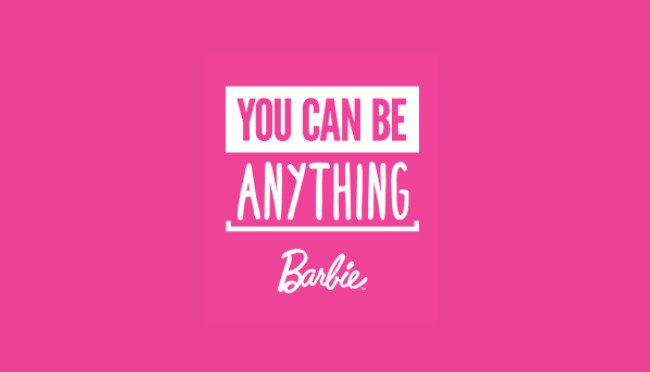The Barbie Effect: The Revolutionary Marketing Genius & History of Disruption Behind the Brand
In 1959, Ruth Handler shook the world with a groundbreaking concept: Barbie. Today, we recognize Barbie as more than just a doll; she's a pop-culture icon, an early disruptor, and a capitalist pioneer. Over six decades, she has evolved with the times, reflecting societal values, providing a reflection for little girls to see their potential, and imprinting an indelible mark on the global toy industry.
Barbie, an innocent-looking 11.5-inch tall doll, forever changed the landscape of toy industry marketing and branding. It was an ingenious concept, a far-reaching strategy that played a pivotal role in not just selling a toy, but also sparking social discussions around gender roles, female empowerment, and societal expectations.
A Trailblazing Symbol for Women
Barbie's revolutionary marketing strategy was rooted in a distinct departure from the traditional baby dolls that encouraged girls to mimic maternal roles. Instead, the inception of Barbie offered young girls an aspirational figure, an independent woman with the power to decide her career and life.
Barbie was born at a time when women's rights were beginning to be publicly debated and advocated for. Her existence itself was a bold statement, symbolizing the changing perceptions of women's roles in society. Through Barbie, girls could envision themselves in roles beyond the domestic sphere, whether it was as an astronaut, a scientist, a doctor, or even a president. This visual representation of potential female careers played a vital role in shifting societal perspectives, making Barbie a trailblazer for women’s rights.
The Genius of Barbie’s Branding
The branding of Barbie was visionary. Instead of just creating a doll, Mattel built a comprehensive brand around Barbie that was bigger than the product itself. The packaging, the commercials, the sponsorship of TV shows - everything was meticulously planned to create a compelling narrative around Barbie. She wasn't merely a doll; she was a story, a friend, a career woman, an aspiration, an identity.
Barbie’s branding was far ahead of its time. The marketing team recognized the power of storytelling and emotions, and they incorporated these elements into their campaigns. They didn’t sell a doll; they sold a feeling of independence, a dream of limitless possibilities, a reflection of an evolving society.
This branding genius was evident in every aspect of the product. For instance, Barbie’s stylish and trendy clothes, reflective of contemporary fashion, weren’t just about aesthetics. They were statements that suggested Barbie was at the forefront of the cultural zeitgeist. Barbie's extensive wardrobe and accessories line transformed the product from a standalone item into a multifaceted experience.
The Barbie Effect: Impacing and Influencing the Future of Branding
Barbie's branding and marketing was an industry first, and it fundamentally changed the rules of the game. It influenced future marketing strategies in the toy industry and beyond, proving that a brand with a clear message, aimed at the right audience, can create a powerful emotional connection.
Moreover, Barbie's transformative influence extended to conversations around diversity and representation. As social consciousness evolved, so did Barbie. Mattel introduced dolls of different ethnicities, body types, and abilities, pushing the envelope and broadening the narrative around inclusivity and representation.
Did you know? 10 Fun Facts about Barbie’s Brand and Marketing Strategy:
First-Ever Adult Figurine: Before Barbie, dolls were typically representations of infants. Barbie was the first-ever doll to portray an adult figure, disrupting the industry and paving the way for adult-figurine toys.
Historic Sponsorship: Barbie was the first toy to sponsor a television program, specifically the Mickey Mouse Club. This pioneering strategy was a game-changer in marketing and helped propel Barbie to unprecedented fame.
Fashion Forward: Barbie has always kept up with fashion trends, making her a trendsetter among toys. Her wardrobe has been designed by more than 70 famous fashion designers, including Givenchy, Versace, and Gucci.
Career Diversification: Barbie has had over 200 different careers since her debut, showcasing the diverse opportunities available to women. She has been everything from an astronaut and surgeon to a video game developer and the president.
Inclusivity and Diversity: Barbie’s brand has progressively adapted to societal changes. Mattel introduced dolls of different ethnicities, body types, and disabilities, promoting the message of inclusivity and diversity.
Global Influence: Barbie is sold in over 150 countries, showcasing her global appeal and the effectiveness of Mattel's international marketing strategies.
Impressive Sales: Over a billion Barbie dolls have been sold since she was first introduced. This highlights the strong, enduring brand appeal Barbie has maintained for over six decades.
Film Star: Barbie has starred in over 35 direct-to-DVD animated films, helping to extend her brand appeal beyond the toy aisle and into the world of entertainment.
Social Media Savvy: Barbie has a significant social media presence, engaging with her audience on platforms such as Instagram and YouTube. This strategy has allowed Mattel to keep Barbie relevant in the digital age.
Personalized Experience: Mattel offers a "Create Your Own" line for Barbie, allowing customers to customize their doll. This innovative approach to product personalization has contributed to the brand's continued success and customer engagement.
In conclusion: Barbie was more than a doll – she was an idea, a statement, and a movement that went on to change societal norms and marketing strategies. Even today, over six decades after her creation, Barbie’s pioneering marketing and branding strategy serves as a powerful case study for marketers worldwide, proving that brands that tell a story, spark emotions, and resonate with their audience's experiences have the potential to create a profound, lasting impact.
Barbie’s real strength was not selling a toy, but feeling an emotion, an experience, and that feeling was represented by her individuality and independence, thus representing the ultimate or quintessential brand expression.


